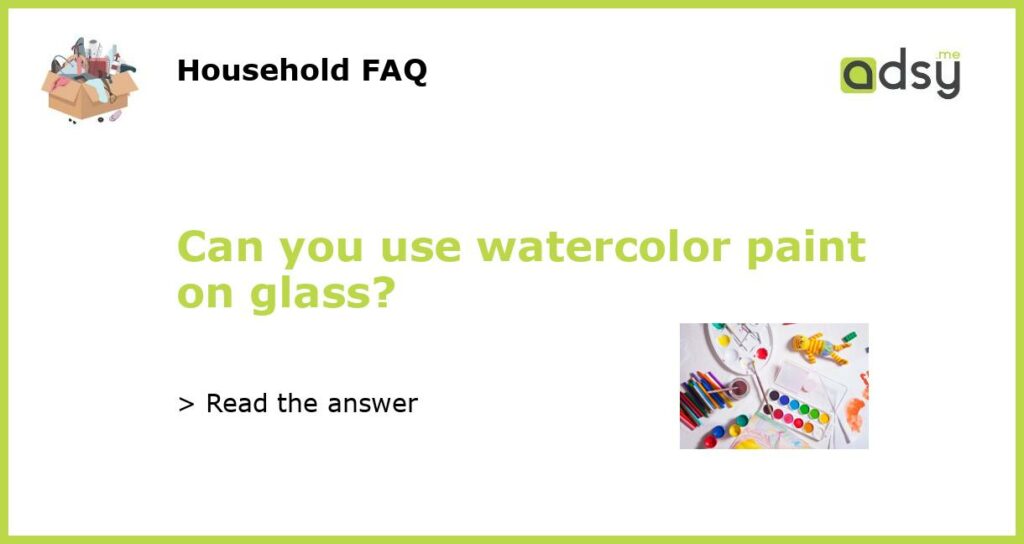Yes, you can use watercolor paint on glass
If you are a watercolor artist looking to experiment with different surfaces, you might have wondered whether watercolor paint can be used on glass. The good news is that yes, you can use watercolor paint on glass. However, there are a few things to consider before you start painting on glass. In this article, we will explore the techniques and materials you will need to successfully create watercolor paintings on glass.
Preparing the glass surface
Before you start painting on glass, it is important to properly prepare the surface. Start by cleaning the glass thoroughly to remove any dust, fingerprints, or grease. You can use rubbing alcohol or a glass cleaner for this step. Next, you will need to create a rough surface on the glass to allow the paint to adhere better. One way to do this is by using sandpaper to lightly sand the surface of the glass. Alternatively, you can also apply a primer specifically designed for glass surfaces. Once the surface is clean and prepped, you are ready to start painting.
Choosing the right materials
When it comes to choosing materials for painting on glass, there are a few options available. First, you will need watercolor paints. Look for paints that are labeled as suitable for glass or multi-surface use. These paints are specially formulated to adhere to smooth surfaces like glass. Additionally, you will need paintbrushes, a palette for mixing colors, and a water container for rinsing your brushes. It is also important to use a strong adhesive tape, such as painter’s tape, to create clean edges and prevent paint from spreading to unwanted areas.
Techniques for painting on glass
When painting on glass, there are a few techniques you can use to achieve different effects. One common technique is the wash technique, where you dilute your paint with water and apply it in a thin, transparent layer. This technique allows light to shine through the glass and gives a more translucent appearance to your painting. Another technique is the dry brush technique, where you use less water and more concentrated paint to create texture and details. You can also experiment with layering and blending colors to create depth and dimension in your painting.
Caring for your glass painting
After you have finished painting on glass, it is important to properly care for your artwork to ensure its longevity. Avoid touching the painted surface directly, as this can lead to smudging or fading. If you plan to display your glass painting, it is best to frame it behind glass to protect it from dust and potential damage. When cleaning the glass, use a soft, lint-free cloth and gently wipe the surface. Avoid using any abrasive cleaners or harsh chemicals that can damage the paint. With proper care, your watercolor painting on glass can be enjoyed for years to come.






